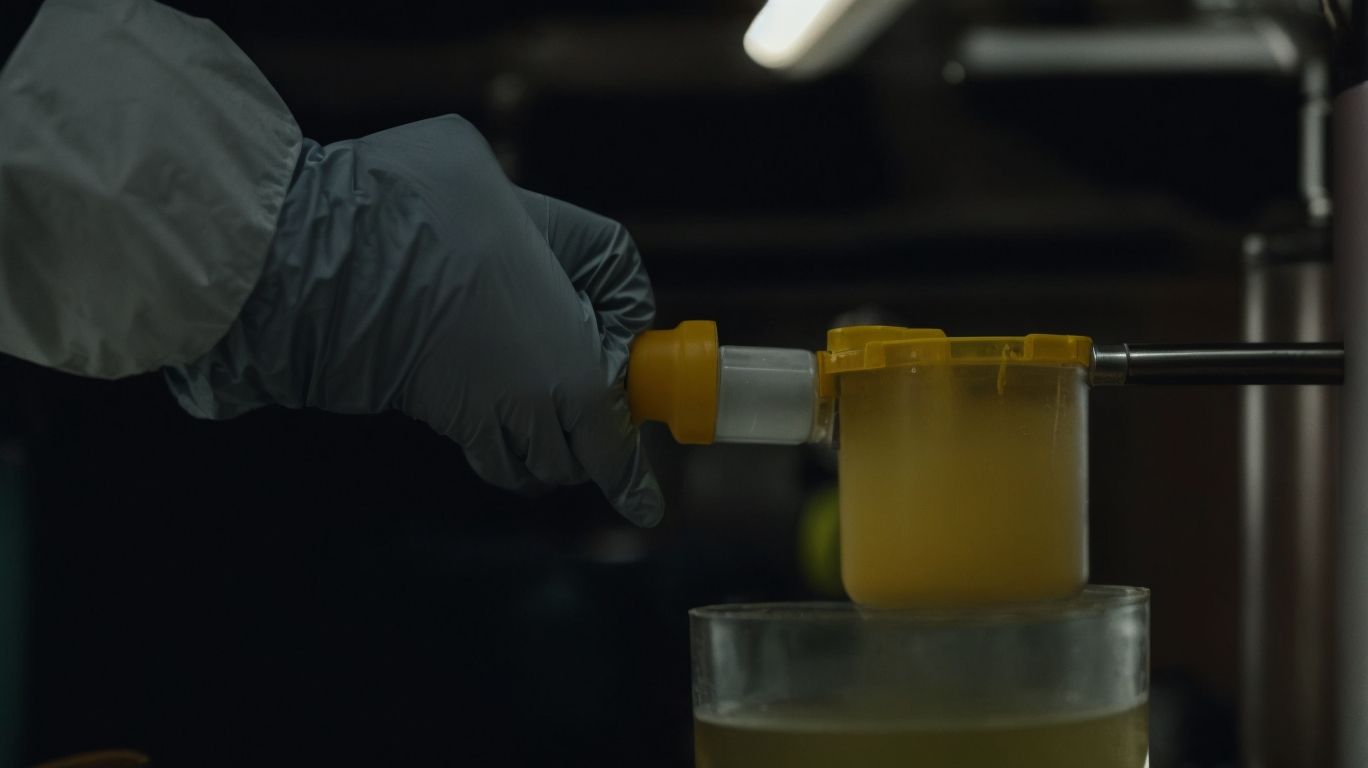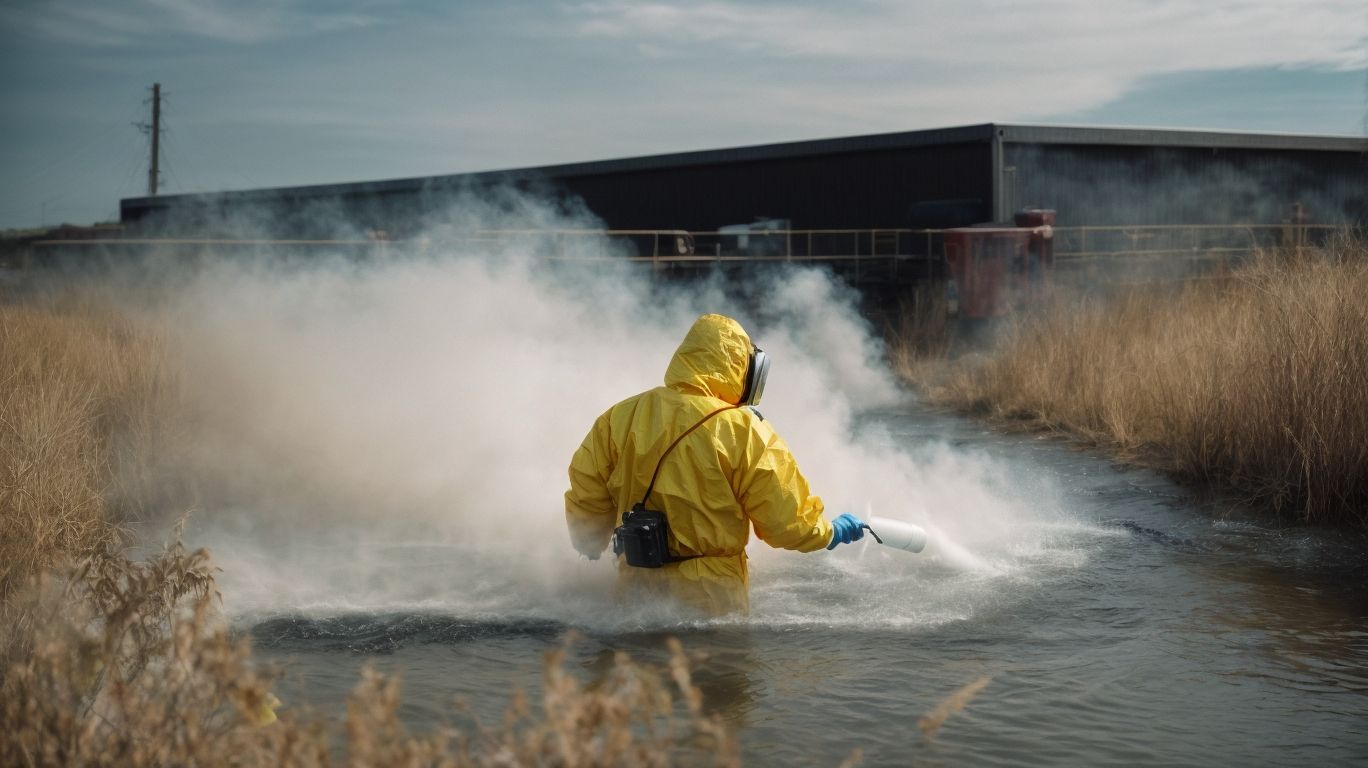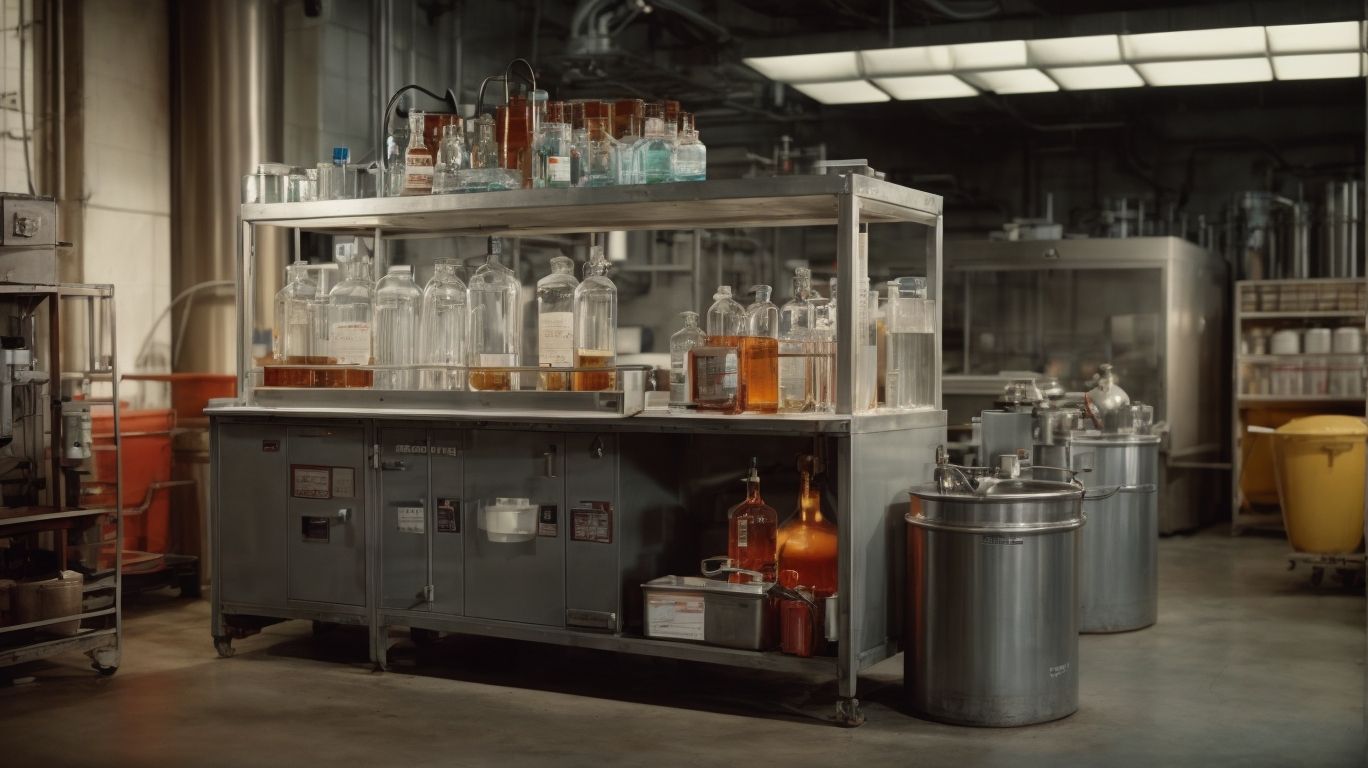Methanol, also known as wood alcohol, is a colorless and highly flammable liquid with a strong odor. It is commonly used as a solvent, fuel, and in the production of various chemicals and products. While methanol has many industrial uses, it can also be extremely dangerous if not handled properly. In this article, we will discuss the essential precautions that should be taken when dealing with methanol to ensure safety for yourself and others.
Methanol is commonly used as a fuel additive, antifreeze, and in the production of chemicals like formaldehyde and acetic acid. It is also used in the production of biodiesel and as a solvent for dyes, paints, and varnishes.
The main danger of methanol lies in its toxicity. Methanol is highly toxic when ingested, inhaled, or absorbed through the skin. According to the National Poison Control Center, as little as 30 mL of pure methanol can be fatal to an adult. If not handled properly, methanol exposure can lead to severe health consequences.
Some common symptoms of methanol poisoning include nausea, vomiting, abdominal pain, loss of vision, and difficulty breathing. In severe cases, it can lead to coma and even death.
To prevent any accidents or exposure to methanol, it is crucial to follow proper precautions. When handling methanol, make sure to wear protective equipment such as gloves, safety glasses, and a lab coat to avoid skin contact and inhalation of fumes. Methanol should be stored in a well-ventilated area away from direct heat or sunlight. In case of spills or accidents, it is essential to follow proper clean-up procedures and dispose of any contaminated materials properly.
In the workplace, it is essential to have safety measures in place when dealing with methanol. This includes regular safety training for employees on how to handle and store methanol safely. In laboratories, extra precautions should be taken, such as using a fume hood and wearing a respirator when handling large quantities of methanol.
Apart from its dangers to human health, methanol can also have adverse effects on the environment. It can contaminate soil and water sources, leading to harmful effects on plants and animals. Therefore, it is essential to follow proper regulations and procedures for disposing of methanol.
In conclusion, methanol can be a useful substance, but it is crucial to handle it with caution to ensure safety for yourself and others. By following proper precautions, wearing protective equipment, and providing proper safety training, the risks associated with methanol exposure can be minimized. It is also essential to be aware of the potential environmental impact and take necessary steps to prevent any harm.
Key Takeaways:
What Is Methanol?

Photo Credits: Chemicalglossary.Net by Eugene Clark
Methanol is a highly toxic type of alcohol that can cause harm if ingested or inhaled. It is often utilized as a solvent, fuel, or antifreeze. Exposure to methanol can result in symptoms such as headaches, dizziness, nausea, and in extreme cases, loss of vision or death.
To ensure safety, it is important to handle methanol in well-ventilated areas, wear protective gear, and never use it for consumption.
What Are the Uses of Methanol?

Photo Credits: Chemicalglossary.Net by Peter Lopez
Methanol has a wide range of industrial applications, such as being used as a solvent, antifreeze, fuel, and in the production of formaldehyde. It is also a key component in the manufacturing of plastics and synthetic fibers, as well as being utilized as a denaturant for ethanol. Furthermore, methanol plays a crucial role in the production of biodiesel and is a popular choice for clean-burning fuel in camping stoves and race cars.
How Is Methanol Dangerous?

Photo Credits: Chemicalglossary.Net by Gerald White
- Methanol is dangerous due to its toxic properties, which can cause harm if ingested, inhaled, or absorbed through the skin.
- Ingestion of methanol can lead to symptoms such as dizziness, nausea, vomiting, and even organ damage or death.
- Inhalation of methanol vapors can cause headaches, dizziness, nausea, and respiratory issues.
- Skin contact with methanol may result in irritation, redness, and absorption into the bloodstream.
- In 2018, a series of methanol poisoning cases occurred in Indonesia due to the consumption of adulterated alcoholic drinks, resulting in numerous fatalities and severe health complications.
What Are the Symptoms of Methanol Poisoning?
The symptoms of methanol poisoning include:
- Headache
- Dizziness
- Nausea
- Vomiting
- Visual disturbances such as blurred vision or blindness
- Breathing difficulties
- Metabolic acidosis
- In severe cases, death
If methanol poisoning is suspected, it is important to seek immediate medical attention.
What Precautions Should Be Taken When Handling Methanol?

Photo Credits: Chemicalglossary.Net by James Allen
When dealing with methanol, it is essential to prioritize safety by wearing suitable personal protective equipment, including gloves and goggles. Always operate in a well-ventilated space and never use methanol near open flames or sparks. Keep methanol stored in a designated, labeled area away from materials that may be incompatible.
In the event of spills, quickly clean and dispose of the substance properly to avoid any environmental hazards. Lastly, seek proper training on safe handling and emergency procedures when working with methanol. Stay alert and knowledgeable when handling methanol.
What Protective Equipment Should Be Worn When Handling Methanol?
When working with methanol, it is essential to wear the necessary protective equipment to ensure safety. This includes:
- Safety goggles to protect the eyes from potential splashes or fumes.
- Chemical-resistant gloves to prevent skin contact with methanol.
- A lab coat or chemical-resistant apron to shield clothing from spills.
- A fume hood to minimize inhalation of methanol vapors.
How Should Methanol Be Stored?
- Store methanol in a cool, well-ventilated area away from direct sunlight and incompatible materials.
- Keep containers tightly closed and labeled with appropriate hazard warnings.
- Ensure the storage area is equipped with spill containment measures and suitable fire suppression equipment.
Fact: Methanol is commonly used as a fuel additive and as a solvent in various industries.
What Should Be Done in Case of Spills or Accidents Involving Methanol?
In the event of spills or accidents involving methanol, immediate action is crucial. Here are the essential steps to take:
- Contain the spill to prevent further spread and exposure.
- Evacuate the area and ensure that it is well-ventilated to disperse the fumes.
- Wear appropriate protective equipment, including gloves, goggles, and a respirator if necessary.
- Neutralize the spill with suitable absorbent materials like sand or commercial spill kits.
- Contact emergency services and follow their instructions for proper cleanup and disposal.
What Are the Safety Measures for Methanol in the Workplace?
To guarantee safety in the workplace when handling methanol, it is essential to implement several safety measures:
- Proper Ventilation: Adequate ventilation is crucial in minimizing the risk of inhaling methanol vapors.
- Personal Protective Equipment: The use of appropriate PPE, such as gloves and goggles, is necessary to prevent skin and eye contact.
- Training: Thorough training on the handling and storage of methanol should be provided to all employees to raise awareness of the hazards associated with it.
How Should Methanol Be Handled in Laboratories?
- When handling methanol in laboratories, it is important to follow these safety measures:
- Use methanol only in well-ventilated areas to prevent inhalation exposure.
- Wear personal protective equipment such as gloves, goggles, and lab coats.
- Handle and transfer methanol using closed systems or under a fume hood.
- Label containers correctly and store methanol away from incompatible materials.
- All laboratory personnel should receive proper training on the use, storage, and disposal of methanol.
What Safety Training Should Be Provided for Employees Working with Methanol?
To ensure the safety of employees working with methanol, it is essential to provide comprehensive safety training that covers handling, storage, and emergency response procedures. This training should include educating employees on the hazards of methanol, proper use of personal protective equipment, safe handling techniques, and emergency measures in case of spills or accidents.
In addition, employees should be educated on the importance of proper ventilation, use of explosion-proof equipment, and regular safety inspections to minimize risks.
It is crucial for employers to prioritize ongoing safety training and provide access to updated information, fostering a culture of awareness and preparedness among their employees.
What Are the Environmental Concerns Regarding Methanol?

Photo Credits: Chemicalglossary.Net by Joe Roberts
Environmental concerns surrounding methanol include its ability to contaminate water sources, harm aquatic life, and contribute to air pollution. Methanol is highly toxic to aquatic organisms and can have long-term negative effects on the aquatic environment. In the event of a spill, it can also seep into the soil and pose a threat to groundwater. To address these concerns, it is important to follow proper storage, handling, and disposal procedures, as well as increase awareness of the environmental impact of methanol.
How Does Methanol Affect the Environment?
- Methanol affects the environment through air pollution, as it contributes to the formation of ground-level ozone.
- It can contaminate soil and water, posing a risk to aquatic life and plants.
- Highly flammable, methanol releases toxic fumes when burned, impacting air quality.
To mitigate environmental harm, industries should invest in safer, greener alternatives. Proper disposal and adherence to regulatory standards can minimize methanol’s ecological impact.
What Are the Regulations for Disposing of Methanol?
Properly disposing of methanol is essential in preventing environmental contamination and potential health hazards. The regulations for disposing of methanol may differ depending on the country and region, but generally involve treating it as hazardous waste, following specific disposal procedures, and obtaining necessary permits. These procedures may include incineration, chemical treatment, or recycling. To ensure compliance, it is crucial to consult with local environmental agencies or waste management authorities for precise guidelines on the regulations for disposing of methanol.
Frequently Asked Questions
What is methanol and where is it commonly found?
Methanol, also known as methyl alcohol or wood alcohol, is a colorless, watery liquid that is commonly used as a solvent, pesticide, and alternative fuel source in industrial settings. It can also be found naturally in humans, animals, and plants, and is commonly found in foods such as fresh fruits and vegetables, fruit juices, fermented beverages, and diet soft drinks containing aspartame.
How can methanol poisoning occur?
Methanol poisoning most commonly occurs from drinking contaminated beverages or consuming products containing methanol. Inhalation of high concentrations of methanol vapor and absorption through the skin can also lead to toxic effects.
What are the potential hazards of methanol release into indoor and outdoor air?
Methanol can be released into indoor and outdoor air as a liquid spray (aerosol) and can contaminate water and food. In agricultural settings, methanol can contaminate crops if released as a liquid spray. To protect against potential hazards, it is important for first responders to use proper protective equipment and clothing when entering an area with an unknown contaminant.
What precautions should be taken when using methanol?
Methanol can enter the body through inhalation, ingestion, skin contact, or eye contact, with ingestion being the most common route of exposure. To ensure safety, first responders should use a NIOSH-certified Chemical, Biological, Radiological, Nuclear (CBRN) Self Contained Breathing Apparatus (SCBA) with a Level A protective suit. Safe use of protective clothing and equipment requires specific training and experience.
What is the recommended level of protection for workers in danger of methanol exposure?
The maximum protection for workers in danger of exposure to unknown chemical hazards or levels above the Immediately Dangerous to Life or Health (IDLH) or greater than the Acute Exposure Guideline Level 2 (AEGL-2) includes a NIOSH-certified CBRN full-face-piece SCBA operated in a pressure-demand mode or a pressure-demand supplied air hose respirator with an auxiliary escape bottle, a Totally-Encapsulating Chemical Protective (TECP) suit, chemical-resistant gloves (outer and inner), chemical-resistant boots with a steel toe and shank, and optional items such as coveralls, long underwear, and a hard hat worn under the TECP suit.
What is the minimum recommended level of protection for workers in situations where the highest level of respiratory protection is necessary but a lesser level of skin protection is required?
The minimum protection for workers in situations where the highest level of respiratory protection is necessary but a lesser level of skin protection is required includes a NIOSH-certified CBRN full-face-piece SCBA operated in a pressure-demand mode or a pressure-demand supplied air hose respirator with an auxiliary escape bottle, a chemical-resistant suit, and chemical-resistant gloves (outer and inner).
